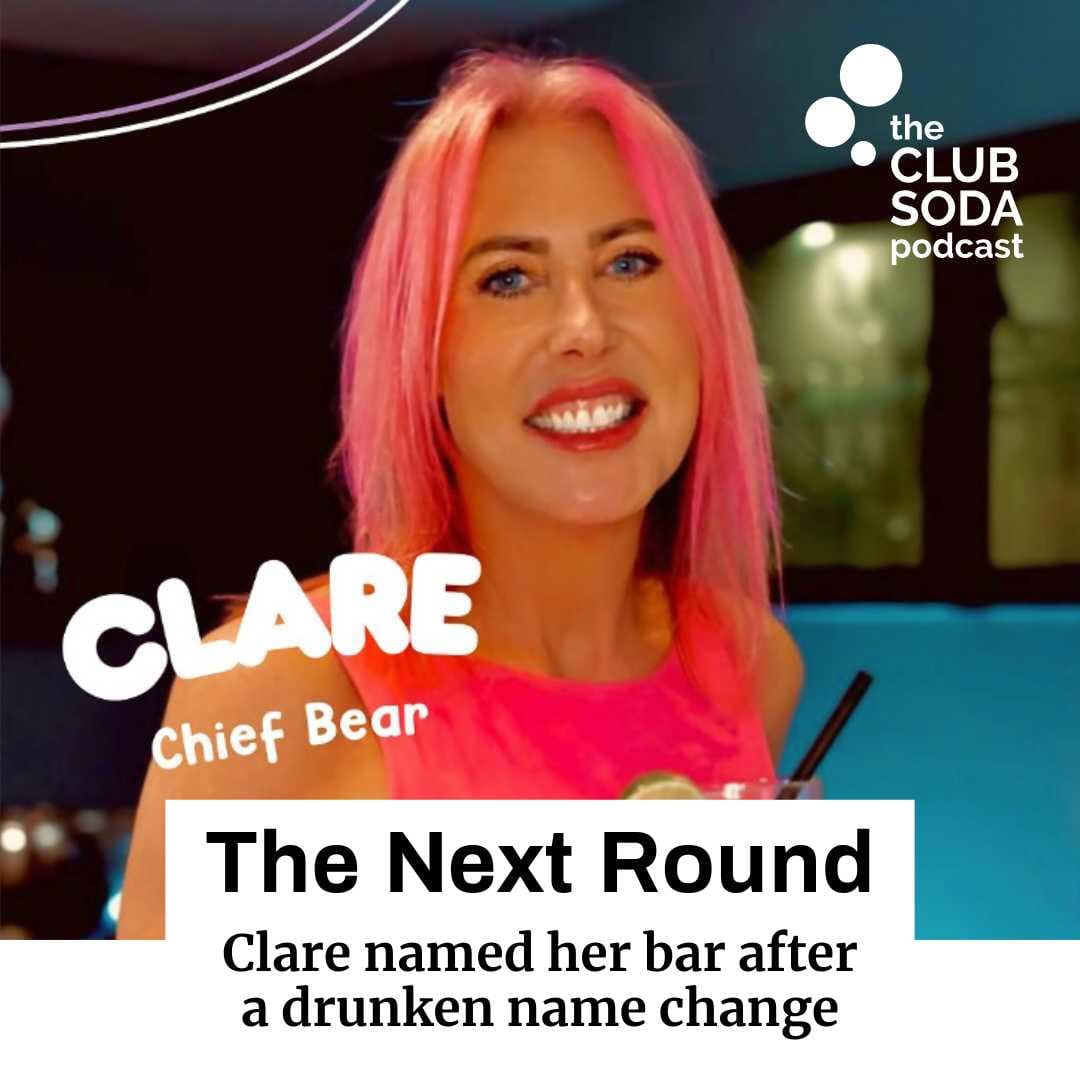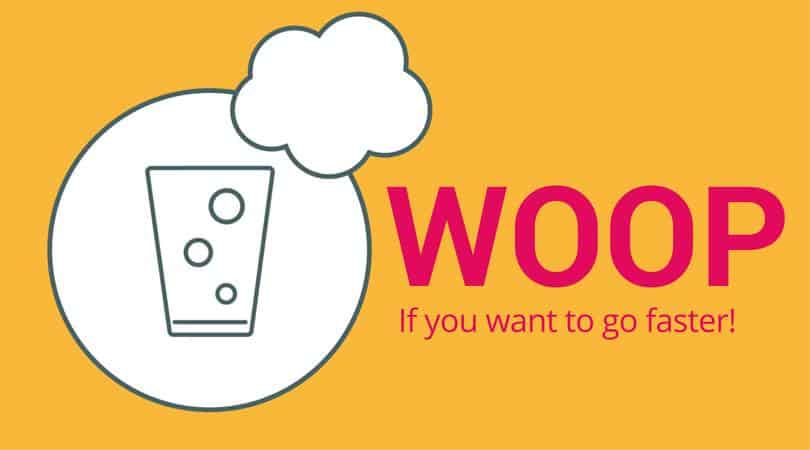
This website uses cookies to improve your experience. We'll assume you're ok with this, but you can opt-out if you wish. Read More
The Next Round: What happens after you change your drinking?

Club Soda is an active community supporting each other in changing and maintaining our alcohol habits. We are introducing WOOP as a behaviour change and planning tool we can use for ourselves and to support each other when times are hard. It gives us a framework to ask questions of ourselves and of others – helping us keep the accountability loop strong.
Dr. Gabriele Oettingen developed WOOP as a powerful method that has been proven to help people accomplish their goals.
WOOP stands for “Wish, Outcome, Obstacle and Plan”. It will help you achieve your long term goals, as well as deal with curve balls that crop up while you are trying to moderate your drinking or to go alcohol-free. Let’s look at these four words.
WOOP is an imagery technique that involves free thoughts. It is also a great way to start or end your day. By carving out a little bit of time to review short or long term events, you can make this part of your behaviour change practice. You can use WOOP to plan your overall goal, or deal with a specific event, person or trigger.
Grab a cuppa, relax, and be ready to concentrate on really planning ahead (we know it’s hard!). Identify a meaningful wish. It can be a wish you want to come true in a day, a month, or over a longer time. Summarise it in 3 to 6 words to make it memorable.
“I wish to go alcohol-free for the next 30 days“
“I wish to drink only 2 pints tonight”
“I wish to go to this party and not drink”
‘”I wish to get home after this stressful day and not open a bottle of wine.”
Identify and imagine the best outcome. How might you feel if you succeed? What might other people say when you have? What might you see? How might you reward your success?
This connects your mind and feelings to the best result of fulfilling your wish. Think about the best result. Hold the outcome in your mind and imagine it.
“I will feel proud as this will be the longest I have gone without alcohol for a long time, I may even lose weight”
“I will wake up without a hangover and feel energetic on a Saturday morning”
“I will feel I have really nailed a difficult situation and know this will spur me on”
‘”I will fell less stressed in the longer term and able to deal with the issue properly tomorrow.”
Identifying an obstacle that may prevent you from achieving your wish. It could be an internal emotion or an external person, place or thing. Once you have identified your obstacle, hold it in your mind, and imagine it.
“I always feel I need a drink on a Friday evening after work”
“Once I have had my second drink I will be open to suggestions from others about having more”
“The hosts may want me to drink their best champagne”
‘”I don’t know how to wind down quickly.”
Then it’s time to create a plan. You can overcome your obstacle. Identify one effective action you can take.
Use the WOOP formula: “If [obstacle], then I will [effective action].” This links your plan directly to the obstacle.
Once you have your plan, repeat it aloud and imagine it.
If “I need a drink on a Friday evening after work” then I will “Make plans for the next four Fridays that do not involve alcohol – even if this means I have to drive!”
If “Once I have had my second drink I will be open to suggestions from others about having more” then I will “Go for a walk around the block to clear my head. Read my plans for tomorrow and check in to the Club Soda Facebook group.“
If “The hosts want me to drink their best champagne” then I will “Say firmly ‘I am not drinking tonight’ and bring my own drink.”
If I don’t know how to wind down quickly” then I will “Find and read a blog about a new technique as a way to distract myself and learn new skills.”
Once you have found the answers, do the WOOP process again.
This website uses cookies to improve your experience. We'll assume you're ok with this, but you can opt-out if you wish. Read More
| Name | Domain | Purpose | Expiry | Type |
|---|---|---|---|---|
| wpl_user_preference | joinclubsoda.com | WP GDPR Cookie Consent Preferences. | 1 year | HTTP |
| PHPSESSID | www.tickettailor.com | PHP generic session cookie. | 55 years | HTTP |
| AWSALB | www.tickettailor.com | Amazon Web Services Load Balancer cookie. | 7 days | HTTP |
| YSC | youtube.com | YouTube session cookie. | 55 years | HTTP |
| Name | Domain | Purpose | Expiry | Type |
|---|---|---|---|---|
| VISITOR_INFO1_LIVE | youtube.com | YouTube cookie. | 6 months | HTTP |
| Name | Domain | Purpose | Expiry | Type |
|---|---|---|---|---|
| _ga | joinclubsoda.com | Google Universal Analytics long-time unique user tracking identifier. | 2 years | HTTP |
| sbjs_migrations | joinclubsoda.com | Sourcebuster tracking cookie | 55 years | HTTP |
| sbjs_current_add | joinclubsoda.com | Sourcebuster tracking cookie | 55 years | HTTP |
| sbjs_first_add | joinclubsoda.com | Sourcebuster tracking cookie | 55 years | HTTP |
| sbjs_current | joinclubsoda.com | Sourcebuster tracking cookie | 55 years | HTTP |
| sbjs_first | joinclubsoda.com | Sourcebuster tracking cookie | 55 years | HTTP |
| sbjs_udata | joinclubsoda.com | Sourcebuster tracking cookie | 55 years | HTTP |
| sbjs_session | joinclubsoda.com | SourceBuster Tracking session | Session | HTTP |
| Name | Domain | Purpose | Expiry | Type |
|---|---|---|---|---|
| mailchimp_landing_site | joinclubsoda.com | Mailchimp functional cookie | 28 days | HTTP |
| __cf_bm | tickettailor.com | Generic CloudFlare functional cookie. | Session | HTTP |
| NID | google.com | Google unique id for preferences. | 6 months | HTTP |
| Name | Domain | Purpose | Expiry | Type |
|---|---|---|---|---|
| _ga_10XZMT03ZM | joinclubsoda.com | --- | 2 years | --- |
| AWSALBCORS | www.tickettailor.com | --- | 7 days | --- |
| cf_clearance | tickettailor.com | --- | 1 year | --- |
| VISITOR_PRIVACY_METADATA | youtube.com | --- | 6 months | --- |
Join Club Soda for 10% off your first order of drinks for UK delivery. Plus get our latest news and special offers for members to choose better drinks, change your drinking and connect with others.
If you get an error message with this form, you can also sign up at eepurl.com/dl5hPn